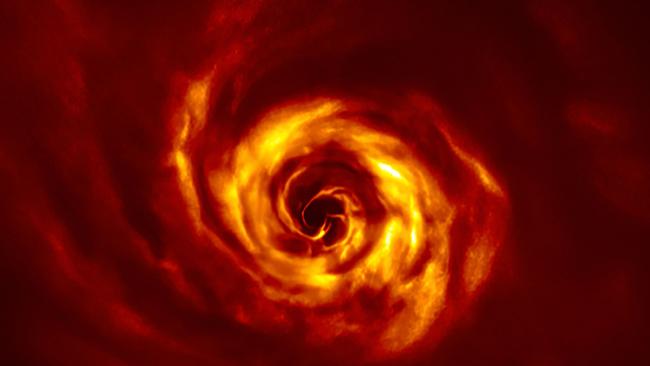Astronomers watch a baby planet being born in our galaxy
Astronomers have gazed into what appears to be a planetary maternity ward, observing for the first time a planet being born.

Astronomers have gazed into what appears to be a planetary maternity ward, observing for the first time a planet being born within a huge disk of dense gas and dust surrounding a newly formed star.
This large young planet is forming around a star called AB Aurigae that is about 2.4 times the mass of the sun and located in our Milky Way galaxy about 520 light years from Earth, researchers said. A light year is the distance light travels in a year, which is 9.5 trillion kilometres.
The scientists used the European Southern Observatory’s Very Large Telescope in Chile to spot a spiral structure within the swirling disk around AB Aurigae generated by the presence of an emerging planet.
They detected a “twist” pattern of gas and dust in the spiral structure, marking where the planet was coalescing.
“It takes several million years for a planet to be in its final stage, so birth is not well defined in time. However, we can say that we were likely able to catch a planet in the process of formation,” said Observatoire de Paris astronomer Anthony Boccaletti, who led the research, published in the journal Astronomy & Astrophysics.
More than 4000 planets have been discovered orbiting stars beyond our solar system. Scientists are eager to learn more about how they are born as cold gas and dust consolidate in the disks surrounding new stars.
The planet is about 30 times further from its star than Earth’s distance from the sun — about the distance of Neptune in our solar system. It appears to be a large gas planet, rather than a rocky planet like Earth.
Reuters



To join the conversation, please log in. Don't have an account? Register
Join the conversation, you are commenting as Logout